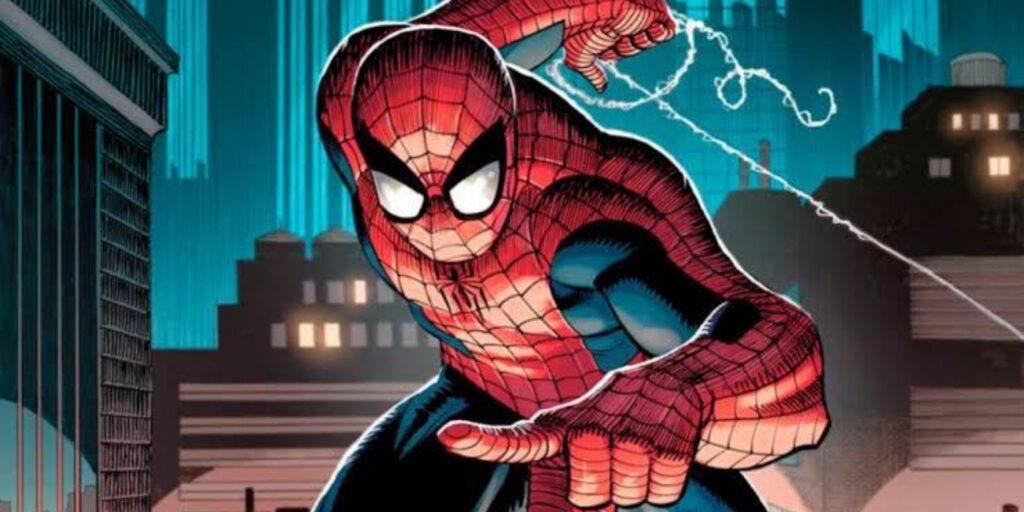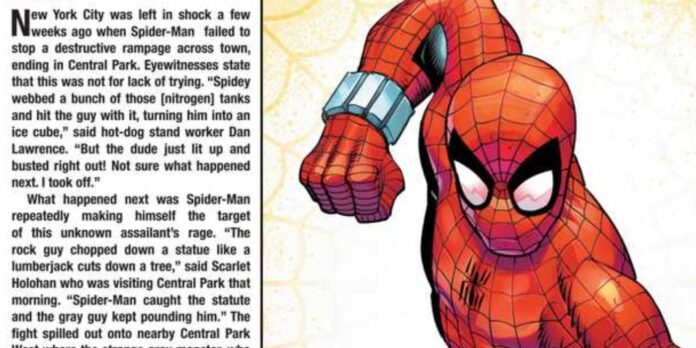Marvel’s Amazing Spider-Man has never been afraid to put its hero through the wringer. However, issue #10 introduces a dramatic turning point for both Spider-Man and Peter Parker that could redefine their relationship to one another.
This installment follows the brutal fallout from Spider-Man’s battle with Hellgate. But instead of just exploring Peter’s emotional wounds, it sets up a bizarre new status quo, one where Spider-Man and Peter Parker may no longer even be the same person.
Spider-Man Grows More Brutal After Defeat

The issue wastes no time in showing how Hellgate’s beatdown has left Spider-Man shaken to his core. Historically, Peter Parker’s response to trauma has often been explosive, sometimes even dangerous. When Gwen Stacy was killed by the Green Goblin, Peter lashed out in anger and nearly killed his enemy. During “The Death of Jean DeWolff” storyline, he nearly crossed the line again, furious at the senseless murder of a close friend.
Related: Mary Jane Watson’s New Arc Just Proved How She Doesn’t Need Spider-Man
Now, in Amazing Spider-Man #10, we’re seeing that same type of reaction play out once more. Spider-Man has doubled down on his crusade against criminals. His altercations are harsher, more violent, and more inventive in unsettling ways. For example, he alters his web fluid formula so that it hardens mid-air into spikes. This is an intimidating and almost sadistic new weapon in his arsenal.
The Black Cat, who appears in the issue, becomes the audience’s emotional anchor here. For long-time fans, this feels familiar but also slightly exaggerated. Spider-Man’s tendency to spiral after trauma is part of his character. However, here the descent is swifter and darker than usual. As the story unfolds, it becomes clear that something far stranger is happening.
Peter Parker Isn’t Himself Because He Might Not Be Spider-Man

The real twist of Amazing Spider-Man #10 comes not in Spider-Man’s battles, but in Peter Parker’s personal life. While Spider-Man is fighting criminals with newfound ferocity, Peter himself is also behaving with uncharacteristic coldness. He lashes out at crime boss Tombstone when approached as a go-between, something old Peter would never have done. He shows unusual cutthroat ambition at his new job.
In case you missed it: Marvel Literally Just Sent Spider-Man To Hell And It’s A Fiery Endgame
Peter even betrayed the very friend who helped him land the position. This new Peter is sharp-edged and confrontational. However, it feels out of sync with the guilt-ridden, responsibility-driven man readers have followed for decades. It’s unsettling to watch him abandon the compassion that defines his humanity. But then comes the jaw-dropping reveal: Peter Parker isn’t Spider-Man in this issue.
When Shocker comes after Peter, angered by Peter’s boldness in confronting Tombstone, Spider-Man appears to save him. Only this isn’t our Peter Parker under the mask. The story hints at some kind of split, whether literal or metaphorical, between Peter and Spider-Man. The revelation reframes everything we’ve seen up to this point. It explains Peter’s unusual behavior and Spider-Man’s escalating brutality.
However, it also raises even bigger questions: Has Spider-Man and Peter Parker somehow been separated into two entities? For all its promise, some fans may feel the storyline is moving too quickly. Kelly previously explored a nihilistic Spider-Man in “The 8 Deaths of Spider-Man,” and returning to that well so soon could seem repetitive. There’s also a sense that Marvel may be rushing the pace of this arc on the upcoming Amazing Spider-Man #1000. Still, the creative team deserves credit for shaking things up in ways that feel bold and unpredictable.





